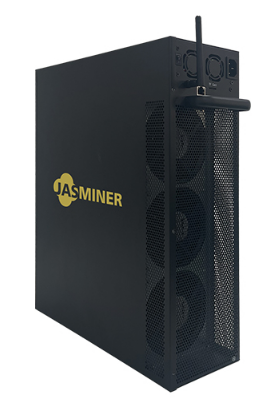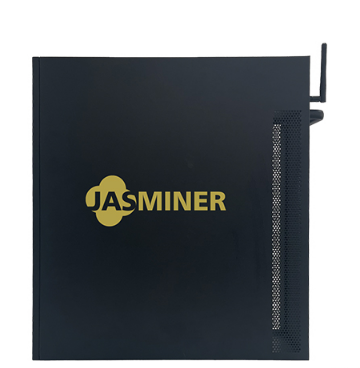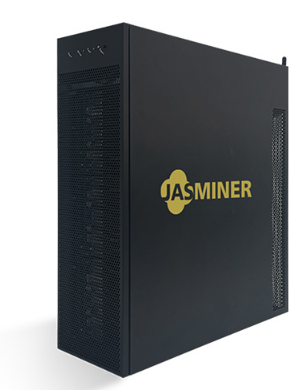How to Test and Optimize JASMINER X16-Q’s Mining Efficiency?
The cryptocurrency mining industry is constantly evolving, with new technologies and equipment emerging to meet the growing demands for efficiency, performance, and sustainability. Among the latest innovations in this space is the JASMINER X16-Q, a state-of-the-art miner designed specifically for ETHash/ETC algorithms. Whether you’re a seasoned mining operator or a home-based enthusiast, understanding how to test and optimize the efficiency of this powerful machine is crucial for maximizing your returns. In this article, we’ll explore the key features of the JASMINER X16-Q, provide step-by-step guidance on testing its performance, and share practical tips for optimizing its efficiency.
Introducing the JASMINER X16-Q: A Game-Changer in Mining Technology
The JASMINER X16-Q is a cutting-edge mining rig that redefines what’s possible in ETHash and ETC mining. With its advanced engineering, innovative thermal management, and versatile design, it’s built to deliver exceptional performance in both industrial and residential settings. Here’s a closer look at what makes this miner stand out:
Engineering Excellence
At its core, the X16-Q boasts a sophisticated triple-chip architecture, delivering an impressive 1950MH/s (±10%) hashrate. This performance is achieved while maintaining an unmatched power efficiency ratio of 0.32J/MH, making it one of the most energy-efficient miners in its class. Additionally, the inclusion of 8GB memory ensures that the device is ready to handle current and future mining requirements, providing a degree of future-proofing that’s essential in this fast-paced industry.
Thermal Innovation
One of the standout features of the X16-Q is its advanced thermal management system. Utilizing a precision-engineered air-cooling solution with three strategically placed fans, the miner maintains optimal operating temperatures between 0-40°C. Despite its high performance, the device operates at a remarkably low noise level of ≤40dB, making it suitable for environments where noise is a concern, such as residential setups or shared workspaces.
Professional-Grade Architecture
Designed in a standard 3U server form factor (445mm x 132.5mm x 443mm), the X16-Q offers versatile deployment options. Its robust construction, weighing just 10KG, incorporates enterprise-grade components while remaining accessible for various installation scenarios. The miner supports both high-speed Ethernet (10/100/1000M) and WiFi connectivity, ensuring seamless integration into existing network infrastructures.

Operational Stability
The X16-Q’s wide input voltage range (110-240V) makes it globally deployable, accommodating different power standards without compromising performance. Combined with its efficient cooling system and optimized power delivery, the miner maintains consistent performance across various operating conditions, meeting the demands of both professional mining operations and sophisticated home setups.
Testing the JASMINER X16-Q: A Step-by-Step Guide
Before diving into full-scale mining operations, it’s essential to thoroughly test the JASMINER X16-Q to ensure it’s performing at its peak. Here’s a step-by-step guide to help you get started:
Step 1: Initial Setup
Begin by unboxing the miner and inspecting it for any physical damage during transit. Ensure all components, including the power supply unit and cooling fans, are securely connected. Place the miner in a well-ventilated area to prevent overheating.

Step 2: Network Configuration
Connect the X16-Q to your network using either the Ethernet port or WiFi. Access the miner’s web interface by entering its IP address in a browser. Configure the network settings based on your setup preferences.

Step 3: Power Supply Check
Plug the miner into a power source within the 110-240V range. Verify that the power supply is stable and that the miner powers on without issues. Monitor the initial power draw to ensure it aligns with the expected consumption.
Step 4: Firmware Update
Check for any available firmware updates through the miner’s web interface. Updating to the latest firmware ensures optimal performance and access to new features or bug fixes.
Step 5: Benchmark Testing
Run a benchmark test to measure the miner’s hashrate, power consumption, and thermal performance. Use reputable mining software compatible with ETHash/ETC algorithms to obtain accurate results. Compare these metrics against the manufacturer’s specifications to verify performance.
Step 6: Stress Testing
Conduct a stress test by running the miner at full capacity for an extended period (e.g., 24-48 hours). Monitor key parameters such as temperature, noise levels, and stability. This step helps identify any potential issues under sustained workloads.
Optimizing the JASMINER X16-Q for Maximum Efficiency
Once you’ve confirmed that the X16-Q is functioning correctly, the next step is to optimize its performance for maximum efficiency. Here are some practical tips:
1. Fine-Tune Power Settings
Adjust the power settings to strike a balance between performance and energy consumption. While the X16-Q is inherently efficient, tweaking the power limits can further reduce operational costs without significantly impacting hashrate.
2. Optimize Cooling
Ensure proper airflow around the miner to enhance cooling efficiency. Consider using external fans or air conditioning in environments with high ambient temperatures. Regularly clean the cooling fans and vents to prevent dust buildup.
3. Overclocking (Optional)
For experienced users, overclocking the X16-Q can yield higher hashrates. However, proceed with caution, as this may increase power consumption and heat output. Monitor the miner closely to avoid instability or hardware damage.
4. Pool Selection
Choose a mining pool with low latency and high reliability to maximize your earnings. Pools with lower fees and consistent payouts can significantly impact your profitability over time.
5. Regular Maintenance
Perform routine maintenance to keep the miner in top condition. This includes checking connections, updating firmware, and monitoring performance metrics. Proactive maintenance minimizes downtime and extends the miner’s lifespan.
6. Environmental Considerations
Deploy the X16-Q in an environment with controlled temperature and humidity levels. Avoid placing it in areas prone to extreme heat or moisture, as these conditions can affect performance and longevity.
Real-World Applications and Benefits
The JASMINER X16-Q’s combination of high performance, energy efficiency, and versatile design makes it an ideal choice for a wide range of mining applications. Here are some examples:

Industrial Mining Operations
Large-scale mining farms can benefit from the X16-Q’s enterprise-grade reliability and low power consumption. Its compact 3U form factor allows for efficient use of space in data centers, while the advanced cooling system ensures consistent performance even in high-density deployments.
Home Mining Setups
For individual miners, the X16-Q’s whisper-quiet operation and aesthetic design make it suitable for residential environments. Its WiFi connectivity simplifies setup, and the wide input voltage range ensures compatibility with standard household power outlets.
Sustainable Mining
With its industry-leading power efficiency ratio of 0.32J/MH, the X16-Q aligns with the growing demand for sustainable mining practices. By reducing energy consumption, miners can lower their carbon footprint and operational costs simultaneously.
Conclusion
The JASMINER X16-Q is a revolutionary mining rig that sets new benchmarks for efficiency, performance, and versatility. By following the testing and optimization steps outlined in this article, you can unlock its full potential and achieve superior results in your mining operations. Whether you’re running a large-scale mining farm or a small home setup, the X16-Q’s advanced features and reliable performance make it a worthwhile investment. Embrace this cutting-edge technology and stay ahead in the competitive world of cryptocurrency mining.